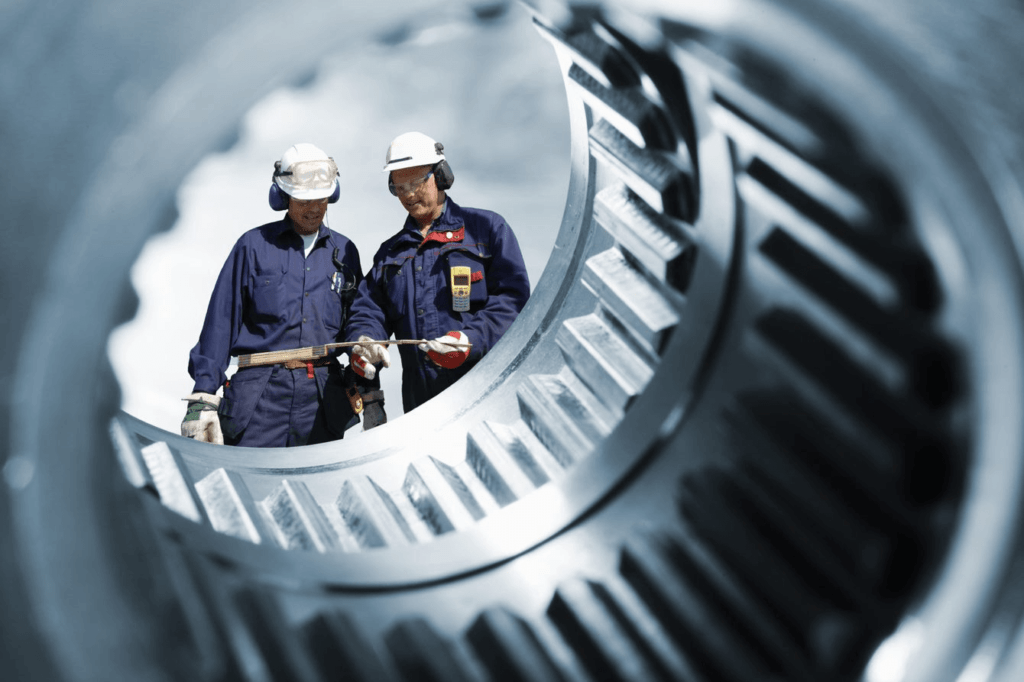Eddy Current Testing vs. Magnetic Particle Testing: Why ECT May Have an Advantage over MPT

Eddy current testing (ECT) vs. magnetic particle testing (MPT) is an apt comparison because these are two prominent nondestructive testing (NDT) techniques. While each technique has its advantages and disadvantages, the eddy current testing method retains the edge. MPT is a comprehensive solution in its own right, but it doesn’t have the same cutting-edge capabilities as its eddy current counterpart.
ECT doesn’t require as much preparation as MPT, as operators can apply eddy current techniques with minimal setup and cleanup time. Still, MPT offers distinct conveniences that can capture small and large flaws alike. This article will compare both techniques and highlight how to choose the best method for an application.
Magnetic Particle Testing: A Review
MPT uses magnetic currents that flow through a tested item. Disruptions within the currents expose deviations on a surface and near-surface level. MPT is most effective for ferromagnetic materials such as nickel, cobalt, and iron. Users have two MPT options: dry magnetic particle testing and wet magnetic particle testing.
The dry option incorporates dusted particles on the magnetized surface of the asset. The magnetic properties cling to discontinuities and highlight them. The wet version involves the injection of magnetic particles within a liquid holder. Or, analysts can apply a spray-based solution with an electromagnetic yoke.
Between the two, the wet alternative is more efficient because it covers smaller flaws than the dry option. The carrier allows the particles to float freely and find minuscule abnormalities. Further, wet testing allows technicians to cover surfaces within a shorter period. However, the dry alternative retains the edge if users are working with subsurface deviations or rougher surfaces.
Regardless, both options have some advantages as they allow users to:
- Detect infinitesimal aberrations on large and complex surfaces.
- Rapidly test large numbers of similar parts.
- Expose subsurface defects effectively.
- Test with portability.
- Save on costs.
With that, MPT comes with some notable drawbacks that may hamper the testing process:
- The magnetic sprays and liquids are messy and toxic.
- MPT only applies to ferromagnetic materials.
- MPT may require the removal of paint and coatings.
- Can be time consuming and dependent on inspectors skill.
On the other hand, ECT doesn’t require paint removal and can probe through nonmetallic surfaces like paint.
Eddy Current Testing: A Review
ECT works on conductive materials (i.e. metals and alloys) and can measure conductivity, permeability, and cover damage from improper heat treatment solutions. It can also assess material thickness and is powerful enough to detect the faintest material losses. Quality ECT equipment should come with an exceptional signal-to-noise ratio, which has the power to read material degradations and corrosive anomalies on assets with multiple layers.
Innovative ECT instruments provide additional convenience in the form of true hand-held portability. Technicians can operate ECT instruments with one hand and obtain resolute inspection data with a single pass. Even though MPT also offers portability, it doesn’t provide the same level of maneuverability as ECT. In fact, MPT equipment requires an electrical source to operate effectively. Additionally, MPT offers limited ability to record data files and provide traceability, whereas analysts can get a full record of inspection with the latest ECT instruments.
Take note of some other advantages of ECT:
- There is minimal preparation time, with no need for surface preparation or chemical use.
- Analysts can probe multi-layered structures.
- Users don’t need direct contact with the surface to read the irregularities.
- There are additional customization specialties (i.e. eddy current array).
The array capability is one of the most advanced features within NDT. Eddy current array (ECA) is an enhanced form of ECT that can outline flaws and cracks in greater detail and conform to complex contours. ECA can reduce inspection times by as much as 95% when compared to other traditional probing methods, something that standard ECT and MPT does not offer. Using the array option, technicians can inspect a variety of unconventional assets, whereas MPT equipment may have a harder time adapting to complicated structures.
Eddy Current Testing vs. Magnetic Particle Testing: The Final Verdict
When it comes to eddy current testing vs. magnetic particle testing, eddy current can be the ideal solution for many applications. The ECT/MPT comparison boils down to this: MPT cannot root out deviations with the same level of precision as ECT.
But applying ECT is only one part of the puzzle, as technicians must also procure quality equipment that maximizes the effectiveness of eddy currents. As a result, companies in all industries can find underlying flaws that normally escape detection with other NDT alternatives, allowing maintenance crews to make the necessary safety repairs to protect personnel and consumers.
Zetec is a leading provider of ECT equipment for industries like oil & gas, manufacturing, and aerospace. Contact us today to get a custom inspection plan and guidance on the best ECT equipment for your inspection endeavors. Learn more about the advantages of eddy current vs magnetic particle testing by downloading the on-demand webinar.

Zetec’s designers are industry-leading experts in ultrasonic and eddy current technologies, and we can help you navigate any of our NDT testing solutions or devices.
